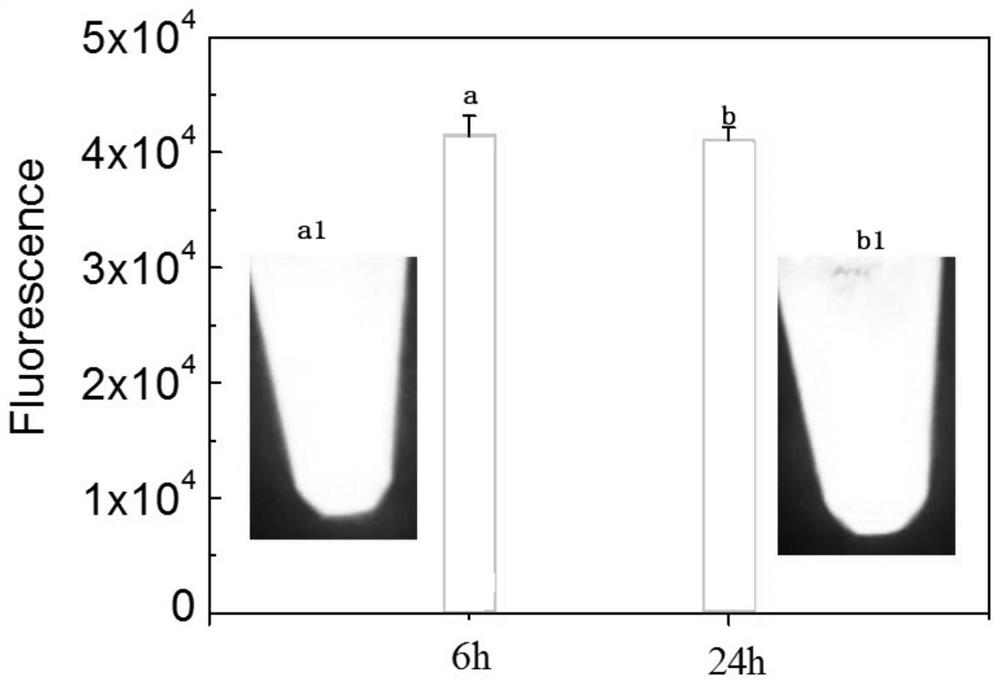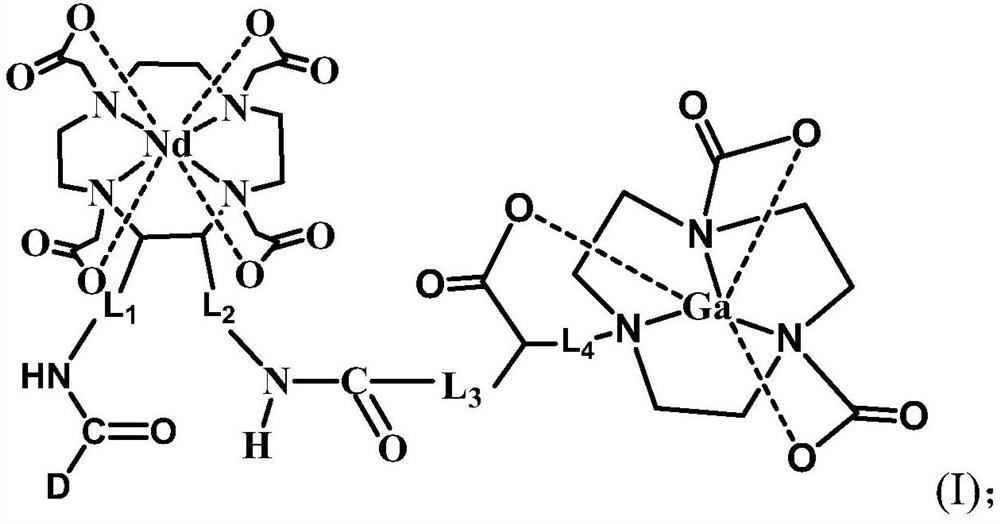Organometallic chelate, as well as preparation method and application thereof, and probe
An organometallic and chelate technology, applied in the field of probes, organometallic chelates and their preparation methods and applications, can solve the problem of reducing the spatial imaging resolution of glioma and boundary surgery accuracy, signal-to-noise ratio and sensitivity Low, not easy to gather liver and spleen, etc., to achieve the effect of improving spatial imaging resolution and surgical accuracy of tumor border, improving sensitivity and signal-to-noise ratio, and weak autofluorescence interference
- Summary
- Abstract
- Description
- Claims
- Application Information
AI Technical Summary
Problems solved by technology
Method used
Image
Examples
preparation example Construction
[0072] One embodiment of the present invention provides a method for preparing any one of the above organometallic chelates, comprising the following steps S100-S300.
[0073] S100, performing a coordination reaction between compound 1 and a neodymium salt to obtain compound 3;
[0074] Wherein, the structural formulas of compound 1 and compound 3 are as follows:
[0075]
[0076] In some of the embodiments, the coordination reaction in step 100 is carried out in an environment with a pH value of 5.5-9.5, and further, the pH value of the reaction system is adjusted by adding a pH value regulator.
[0077] In some of these embodiments, the above-mentioned pH adjusting agent is selected from inorganic bases, including but not limited to: sodium hydroxide and potassium hydroxide and the like.
[0078] In some of the embodiments, the coordination reaction in step S100 is carried out in a reaction system with a pH value of 6.5; further, the pH value of the reaction system is ad...
Embodiment 1
[0123] 1) Take 1 mL of 0.1 mol / L neodymium chloride aqueous solution, mix with 4 mL of 0.5 mol / L aqueous solution of Compound A1, and use 0.4 mol / L NaOH solution to adjust the pH value of the system to 6.5, stir at room temperature for 24 hours, and The reactant was concentrated and precipitated with ether to obtain compound A3. The structures of compound A1 and compound A3 are shown below.
[0124]
[0125] 2) Take 1mL of 0.1mol / L gallium chloride solution (gallium is 68 Ga), mixed with 4mL of 0.5mol / L aqueous solution of Compound 2A, and adjusted the pH value of the system to 6.5 with 0.4mol / L NaOH solution, stirred at room temperature for 24 hours, concentrated the reactant, and precipitated with ether to obtain Compound 4A . The structures of Compound 2A and Compound 4A are shown below.
[0126]
[0127] 3) Weigh 0.5 mg RGD, 1 mg compound 4A and 1 mg compound 3A, dissolve the above compounds in 5 ml water, weigh 2 mg 1-(3-dimethylaminopropyl)-3-ethylcarbodiimide h...
PUM
 Login to View More
Login to View More Abstract
Description
Claims
Application Information
 Login to View More
Login to View More - R&D
- Intellectual Property
- Life Sciences
- Materials
- Tech Scout
- Unparalleled Data Quality
- Higher Quality Content
- 60% Fewer Hallucinations
Browse by: Latest US Patents, China's latest patents, Technical Efficacy Thesaurus, Application Domain, Technology Topic, Popular Technical Reports.
© 2025 PatSnap. All rights reserved.Legal|Privacy policy|Modern Slavery Act Transparency Statement|Sitemap|About US| Contact US: help@patsnap.com



